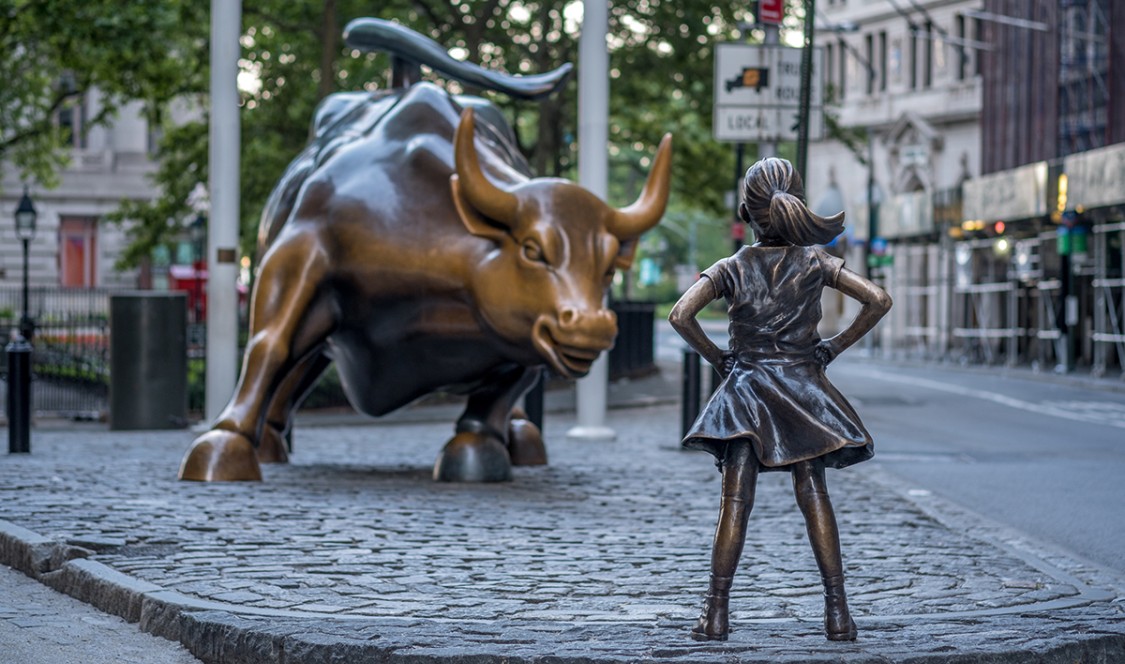Over the past few years, historical monuments in public spaces have been flash points for anti-colonial and Black Lives Matter protestors. One side has argued for their removal while the other side for their preservation.
A discussion at the Ath contextualized these efforts, providing historical perspectives from three experts whose work focuses on understanding the meaning and intentions of monuments.
Drawing from their research on the public memory of the Atlantic slave trade, pioneer monuments of the American West, and Holocaust memorials in post-World War II Germany, panelists Ana Lucia Araujo, professor of history at Howard University; Cynthia Culver Prescott, associate professor of history at the University of North Dakota; and writer and editor Daniela Blei provided a thought-provoking discussion.
CMC History Professors Sarah Sarzynski and Tamara Venit-Shelton moderated the panel, while Ath Fellows Chris Agard ’21 and Will Frankel ’21 hosted the virtual program and curated the audience questions.
Drawing from their research on the public memory of the Atlantic slave trade, pioneer monuments of the American West, and Holocaust memorials in post-World War II Germany, panelists Ana Lucia Araujo, professor of history at Howard University; Cynthia Culver Prescott, associate professor of history at the University of North Dakota; and writer and editor Daniela Blei provided a thought-provoking discussion.
CMC History Professors Sarah Sarzynski and Tamara Venit-Shelton moderated the panel, while Ath Fellows Chris Agard ’21 and Will Frankel ’21 hosted the virtual program and curated the audience questions.
Araujo, a social and cultural historian, began her presentation by defining what a monument is. “Monuments are devices that people in different societies built to pay homage to a particular individual or a past event,” she said. “In many ways, monuments are intended to keep the dead alive in the present. Produced in a particular moment of the past, but they are not the past, they are not history, they are related to memory, a cultural moment that is defined as past.”
How these cultural moments are recognized, specifically monuments to slave traders, such as Edward Colston in Bristol, England, or Belgium’s King Leopold II, is the looming question, Araujo said. Araujo believes that that these monuments should be removed, but then what? Should they be placed in a museum, and modified with a plaque explaining and expanding upon their histories?
Perhaps Germany’s approach can serve as a model, suggested Daniela Blei, who focused her discussion on how post-Nazi Germany has “shown how monuments and memorial projects can encourage and help a society confront a shameful past, both culturally and politically.”
The “1968 generation” in Germany she said --referring to young activists “who went to battle” against their country’s “Nazi past” -- denounced German complicity in the Holocaust. “This movement started the process for Germany to come to terms with its history,” Blei continued.
The result, she said, is that “for many years, and at all levels of society, Germany has encouraged a wide variety of memorials, both big and small, which reflect the complexity of the country’s Nazi past. The German government plays an essential role, helping to create places for remembrance, and funding for the arts, which makes the memorials possible.”
Prescott, whose work focuses on gender in the American West, shifted the discussion to the United States, highlighting pioneer monuments, which don’t generate as much attention as Confederate monuments, but share characteristics and histories.
These pioneer monuments, she said, were controversial from their beginnings, but the reasons they were controversial have evolved over time.
Built to celebrate early white settlers, typically in the American West in 1880s and 1890s, simultaneous to monuments to Confederate soldiers, the pioneer monuments were commissioned “ultimately for the same reason,” Prescott argued, “to celebrate white civilization and by logical conclusion, to celebrate white supremacy over other racial groups.”
Early examples of these monuments, Prescott said, “visually represent racial hierarchy, showing strong white men taking western lands, and native peoples yielding to white settlers.”
Ironically, Prescott noted, when these monuments were erected, they were protested for not being racist enough and for glorifying Native Americans. One hundred years later, Prescott continued, “Scholars began to question pioneer monuments for representing white racial hierarchy at a time when native activism was also on the rise.”
Venit-Shelton asked the panel if these static monument spaces can be transformed to take on a dynamic new meaning and “tell interesting, complex stories?”
Prescott responded that, “Community stakeholders need to be engaged, but also, we need to think more in terms of monuments, plural -- or teaching moments -- rather than thinking that just one monument or creation can encapsulate all of the messages right now or let alone one or two generations down the road.”
As an example, Prescott cited the Wall Street bull statue – intended as a tribute to America's rebound from the 1987 stock market crash -- that has stood in New York’s financial district since 1989. In 2017, the “Fearless Girl” statue was installed directly facing the bull on the day before International Women’s Day.
“How the girl stood up to the bull with arms crossed completely transformed the way people saw the Bull sculpture,” Prescott said. This demonstrated, she continued, that, “We can put different things in conversation with one another and create more complex meanings than one traditional, celebratory statue would be able to accomplish.”
—Anne Bergman

